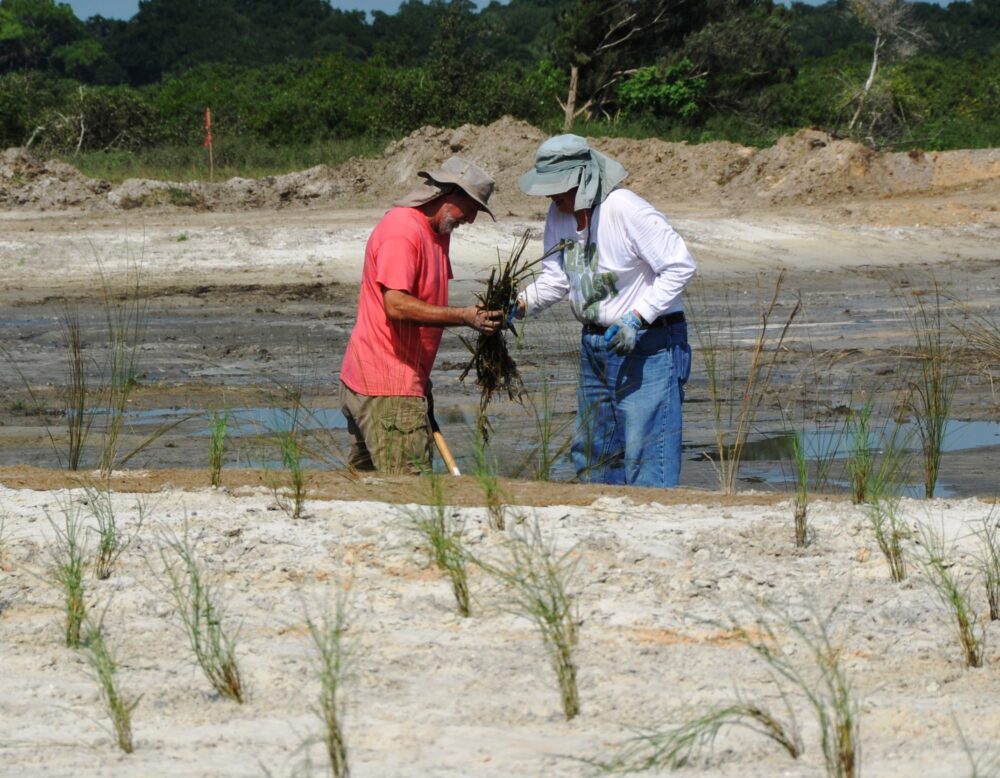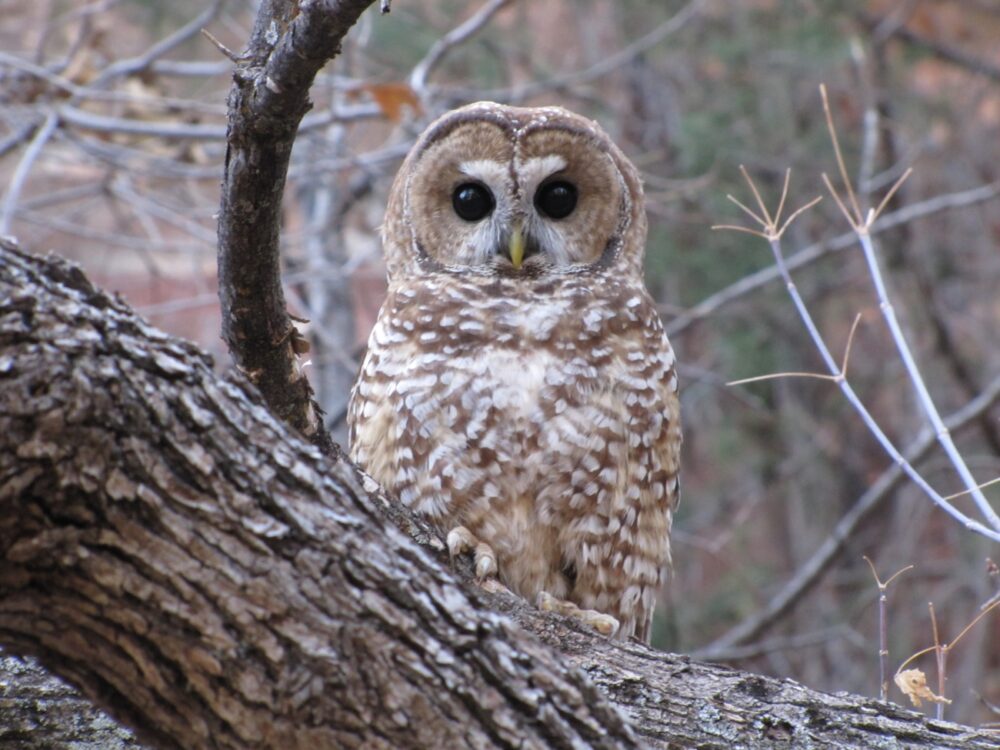We have much more to do and your continued support is needed now more than ever.
Weather is Warming, Look Out for Rattlers
Rattlesnakes play an important role in the environment and have even helped humans battle illnesses. Learn more about a rattlesnake’s contribution to the planet, what species are at risk, and how to protect them.
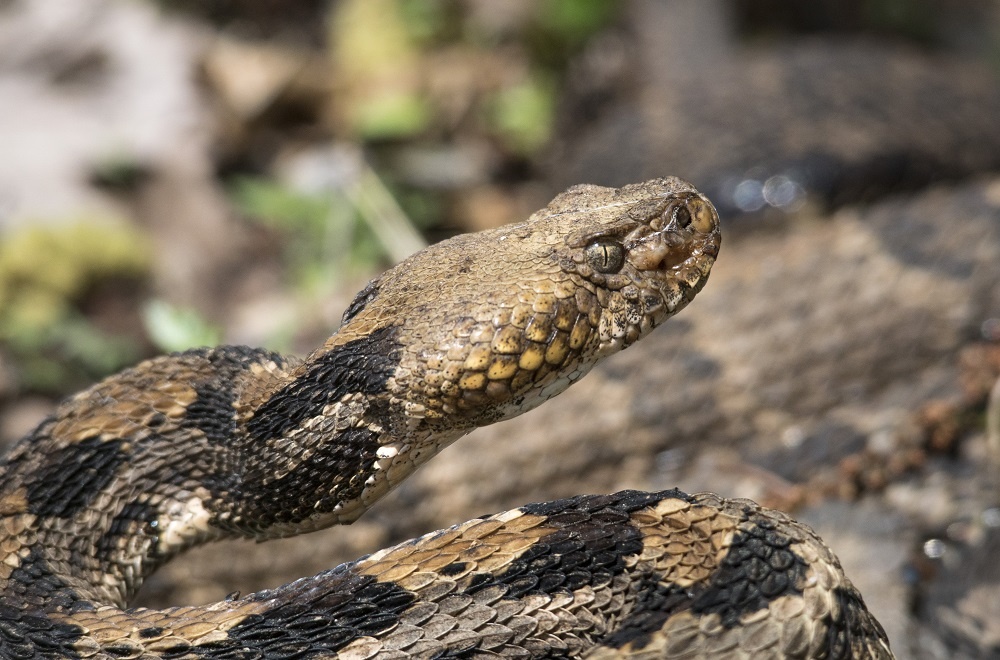
Rattlesnakes are one of the most iconic groups of North American snakes due to the characteristic “rattle” found at the tip of their tails. Did you ever wonder what makes that rattle sound? A rattlesnake’s rattle is composed of a series of interlocking scales, which the snake adds to each time it molts. Muscle contractions cause the scales to click together, resulting in a rattling sound. Rattlesnakes will rattle their tails to warn predators to stay away, and also as a warning to humans “I’m here, don’t step on me, and give me space.”
“Rattlesnakes do not seek people out—generally people who are bitten have had the misfortune of stumbling across a rattlesnake or have attempted to handle one.”
Rattlesnakes are found in almost every part of the continental U.S., but they are most common in the Southwest U.S., Mexico, Central America, and South America. They can be found in a variety of ecosystems including forests, grasslands, shrubland, swamps, and deserts, and they are also capable swimmers, when its necessary.
Almost all reptiles, including rattlesnakes, are ectothermic (cold-blooded), which means they cannot regulate their body temperatures like warm-blooded animals (like mammals, including humans, and birds). Since they are cold-blooded, they need to rely on their surroundings for heat, so they are most active in the late spring, summer and early fall when most regions of the U.S. are warmer. During the winter months, they will gather in dens and coil up to retain their heat. A rattlesnake’s typical lifespan is 10 to 25 years.
Threatened and Endangered Rattlesnakes in the U.S.
There are more than 30 species of rattlesnakes in the U.S. Of those, three of the species are endangered or threatened at the state and/or federal level: the timber, the Eastern massasauga and the New Mexican ridge-nosed rattlesnakes. There are others that are experiencing population declines due to various threats (development, agriculture, and hunting).
What is an endangered species?
An endangered species is a plant or animal that is facing extinction if their population numbers do not increase. A wildlife species can be listed as endangered at the state, federal, and international level. At the U.S. federal level, endangered and threatened species are protected by the Endangered Species Act (ESA). Their protections are enforced by the U.S. Fish and Wildlife Service (USFWS), or the National Marine Fisheries Service (NMFS) for certain marine species. The International Union for Conservation of Nature’s (IUCN) Red List provides conservation status assessments for species worldwide, and can list species as data-deficient or least concern, up to critically endangered or even extinct.
- Timber Rattlesnake. The Timber rattler’s population is in decline according to the IUCN Red List, due to habitat loss from development and recreational activities including hunting. This large rattlesnake can be found in the Eastern half of the U.S., ranging from eastern Kansas, Texas, Iowa and central Wisconsin to Georgia, the Carolinas, West Virginia, western Virginia, Pennsylvania and New England. The Timber rattlesnake is listed as endangered at the state level in New Jersey, and has experienced as much as a 50 to 66 percent population decline. They are also endangered in Ohio, Connecticut, New Hampshire, Massachusetts and Vermont (and have been eradicated in Maine).
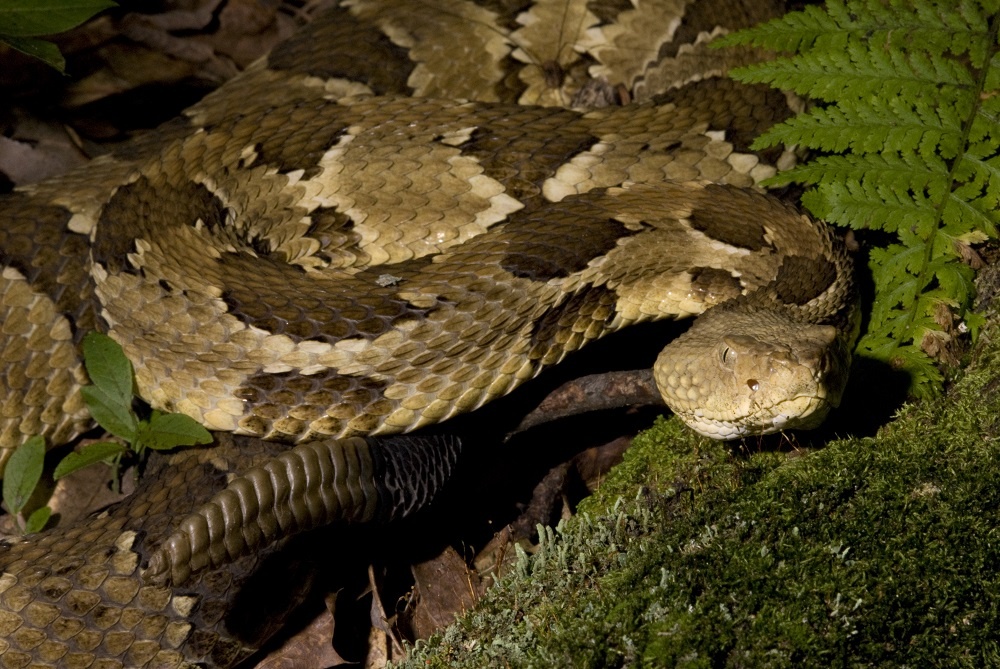
- Eastern Massasauga Rattlesnake. This small pit viper is listed as threatened under the Endangered Species Act. It can be found in the northern Midwest U.S. and Ontario, Canada. Currently, most of the remaining populations are found in Michigan, with New York, Pennsylvania, Ohio, Indiana, Illinois, Wisconsin and Iowa still having some robust populations (but they become fewer in number towards the edges of their geographic range). The eastern massasauga’s population has declined significantly, primarily due to habitat loss and human interactions (road fatalities and being intentionally killed by humans who fear them).
- New Mexican Ridge-Nosed Rattlesnake. This species is listed as threatened under the Endangered Species Act and is listed as endangered in the state of New Mexico. The New Mexican ridge-nose is a small, montane, rattlesnake restricted to a narrow range of mountain ranges in the desert southwest of the U.S.—Arizona and New Mexico—and Mexico. This species faces threats including loss of habitat due to extreme wildfires, livestock grazing (and other land management actions that contribute to degraded watersheds); illegal collection is also a threat for this small rattlesnake.
Other rattlesnake species facing population decline, according to the IUCN’s Red List include:
- Eastern Diamondback Rattlesnake. Their population is decreasing due to development (both residential and commercial), and agriculture. The Eastern diamondback can be found throughout the southeastern U.S., including eastern Louisiana, southern Mississippi, Alabama, Georgia, eastern South Carolina, southern North Carolina and all of Florida.
- Red Diamond rattlesnake. Their population is also in decline due to development, agriculture, and human activity including hunting and trapping. The Red diamondback lives in southwestern California.

Benefits of Rattlesnakes to the Environment and to Humans
Wild rattlesnakes and other snakes play an important role in helping to keep our ecosystems healthy. Rattlesnakes prey on many small rodents that can cause harm to humans if their populations are too large, including mice and rats, and without them these populations would grow and become unmanageable.
Rattlesnake venom can heal.
As most people know, rattlesnakes are venomous. Meaning that if you get bitten by a rattlesnake, and are injected with venom, you will become very sick if not treated by a medical professional quickly. The rattlesnake’s venom, while toxic, may also help heal.
“Medical experts believe that the toxin in rattlesnake venom, crotoxin, could be a promising compound for the treatment of chronic pain.” While the toxicity of crotoxin (a toxic protein found in rattlesnake venom) limits its use in medical treatments, through intensive research, scientists have been looking for new ways to use the toxin, with a goal of reducing its toxicity and enhancing its healing effects, to treat various diseases.
“A team of researchers, who were part of Brazil’s National Science and Technology Institute (INCT) on Toxins in São Paulo State, in coordination with the National Council for Scientific and Technological Development (CNPq), set out to determine if crotoxin is effective for neuropathic pain, which is caused by structural and functional plasticity in sensory pathways, producing impairments in nociceptive processing.
The team found that crotoxin is a promising new way to treat the condition for its prolonged anti-inflammatory and antinociceptive effects.” Meaning rattlesnake venom may help reduce inflammation and persistent pain in humans. This is good news.
Rattlesnake venom is also being used in research to battle cancer. At Texas A&M University-Kingsville’s Natural Toxins Research Center, researchers test the venom from a Western diamondback rattlesnake against different types of cancer cells, including various kinds of melanomas and carcinomas, hoping to find ways to block the growth of cancer cells. The Natural Toxins Research Center is the largest research facility of its kind in the U.S., housing both a research laboratory and the serpentarium, that contains some 450 snakes, and 25 different species.
“The idea is to create drugs that replicate the growth-blocking activity of the snake venom”, said Peter Davies, the center’s co-director and a professor at the Institute of Biosciences and Technology at the Texas A&M Health Science Center. “We’re looking to translate what we can discover with the venom but ultimately translate it into what can be useful for people,” Davies said.
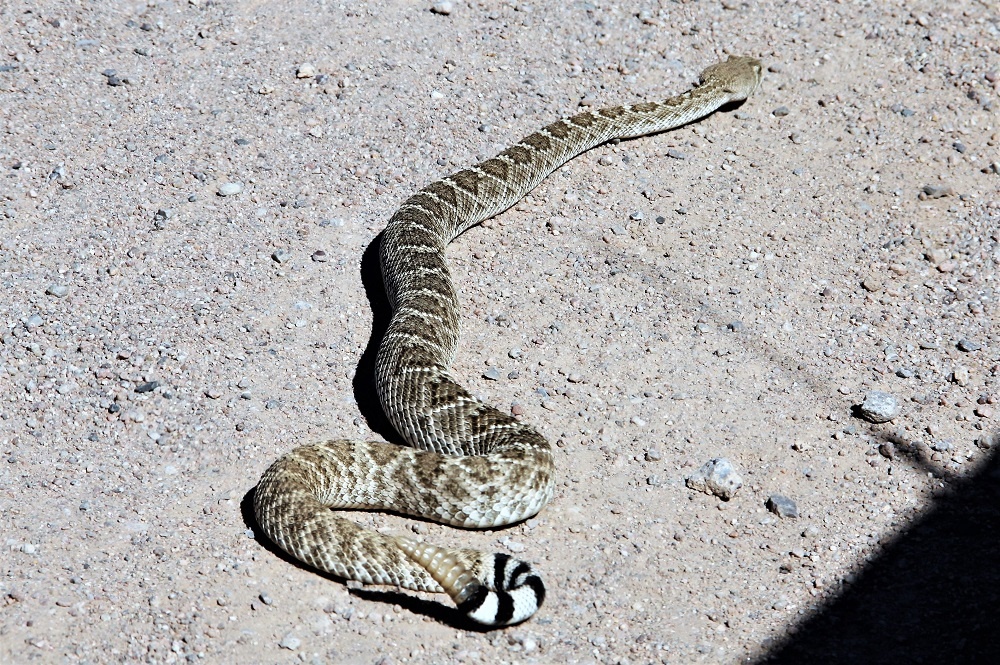
How do scientists get venom to use in medical treatment?
Venom extraction is the process of obtaining venom from a variety of captive venomous snake species, including rattlesnakes, by allowing the snake to bite into a collection container in order to harvest the snake’s venom.
At the Reptile Discovery Center and Medtoxin Venom Laboratories in Deland, Florida, snakes are handled each week for the purpose of venom collection. The venoms collected are used in research and treatments for various medical conditions; the venom is also used to develop antivenom, the medication used to treat snake bite victims. The snakes at the Reptile Discovery Center are housed in a safe and controlled environment, and every effort is made to reduce any danger to the handler and any danger or stress to the snake.
The mission of the Center is to educate people about reptiles and their importance on the planet, including snakes, and share how captive venomous snakes are helping human health through the use of their venom in medical research.
The Edisto Island Serpentarium in South Carolina also has a venom extraction program and welcomes visitors to come and watch this amazing process. Opened to the public in July of 1999, the Serpentarium is a culmination of more than 50 years of experience with snakes and other reptiles by brothers Ted and Heyward Clamp of Edisto Island. The serpentarium features both indoor facilities that house reptiles and outdoor habitats that house turtles, snakes, alligators, and more.
The reptiles in the outdoor habitats are not displayed behind glass but can be viewed by visitors who look over low-walled enclosures to observe the snakes living in streams, climbing in trees or basking on stumps or logs exactly as they would be seen if encountered in the wild. The Edisto Island Serpentarium is committed to education and wild reptile conservation.
Their staff hosts educational programs, including the venom extraction program, to help visitors learn about the benefits of snakes and other reptiles and their important role in a healthy ecosystem. Additionally, Serpentarium staff highlight best practices for humans to coexist with snakes and other reptiles safely and peacefully.
Threats to Rattlesnakes

Rattlesnakes face various threats including habitat loss, disease, and humans.
A common threat to rattlesnake populations is habitat loss. Their habitat can be destroyed or fragmented by development (both residential and commercial), agriculture, and the introduction of invasive species (for example, pythons in the Florida Everglades).
Another threat to rattlesnakes is snake fungal disease (SFD). SFD is a skin infection that affects rattlesnakes and other snakes in the U.S. and Canada. Common symptoms can include irregular scale surfaces, premature shedding and facial disfiguration. “Due to the novelty of this disease, there are still many unknown factors related to transmission, infection, and population effects.” If you observe a rattlesnake in the wild that is showing signs of SFD, please notify local wildlife officials because the disease can possibly be spread to other snakes.
And undoubtedly the biggest threat to rattlesnakes is humans. Sometimes rattlesnakes and other snakes are accidentally hit by cars when they are crossing the road. And many humans fear rattlesnakes and other snakes and will unnecessarily kill them. As mentioned earlier, there are many important benefits to having rattlesnakes as part of our ecosystems. To ensure healthy wild rattlesnake populations, habitat protection and restoration is key, and education on how to safely coexist with these reptiles is essential.
Rattlesnake Conservation: How Can You Help Protect Rattlesnakes?

- Protect and restore habitats at home and in your community.
- Keep rock piles and log piles away from doors and open windows.
- In the spring, when it starts to warm up, and in the late fall when there are still pockets of warm weather, be careful driving, as rattlesnakes and other snakes like to lay on the warm asphalt roads to warm up.
- Celebrate World Snake Day on July 16 by educating your family and friends about the benefits of rattlesnakes and other snakes and their contribution to ensure a healthy ecosystem.
- If you encounter a snake in your yard, in your community, or on a hike, leave it alone. If you encounter a venomous snake near children and/or pets, please call a local snake removal company to move the snake away from people.
Learn More About Rattlesnakes:
- NWFs online wildlife guide on rattlesnakes
- Rattlesnakes on the Hunt, National Wildlife magazine
- How Rattlesnakes Rattle, National Wildlife magazine
- Venom Emergency, National Wildlife magazine
- Snake Charmer, National Wildlife magazine
- How a Rattlesnake Strikes, Ranger Rick magazine(for kids)



